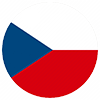The IT industry is very diverse and has grown by leaps and bounds over the last 60 years. Since IT is our daily bread and we connect the smart minds of IT specialists with projects they like, the topic is close to our hearts. So we decided to map the history of IT professionals, look back into the past and reflect on the most important milestones that have influenced the IT sector. It was a roller coaster ride, but you can enjoy it all the more with us.
How did it all begin? With punch cards back in 1950s!
Although unimaginable to many of us today, computing operations in the 1950s were mostly done on paper. That’s right! This era gradually came to be referred to as the era of the first generation of computers, which was characterised by the use of electron tubes. Computers were relatively inefficient, very expensive, had high power consumption, high failure rates and very low computing speed. Initially, programs were created on interconnect boards, followed by the use of punch cards and then punch tapes, which also served, along with line printers, to keep the results.
What’s a punch card?
Punch card is a medium used to record data to be later processed by a computer. They were made of thin cardboard or metal where the information was represented by a hole at a certain position. The holes were arranged in a matrix. Punch cards were later replaced by punch tapes that were more practical. They could be read either mechanically or optically.
Are you interested in the IT field and looking for job positions and opportunities in the IT industry? Whether you are a programmer, developer, tester, analyst, or software architect, contact us and we will find an IT project tailored to your needs from our IT job offers. Take a look at the current available job positions in the IT field. We will help you find new job challenges and opportunities. We look forward to collaborating with you!
What did the typical 1950s programmer look like?
The work of a programmer was mainly mechanical in nature, so in addition to mathematics, a programmer had to put up with very low pay at that time. To be more precise: in the 1950s, there were rather women programmers – in the beginning, it was mainly women who did this work.
Fun fact from the USA: Due to gender reasons, women could not obtain security clearance to work with computers. However, the management did not realize that no one else knew how to use them at the time.
What did computers look like back then?
ENIAC, MANIAC, UNIVAC… names for giant machines that were so big that when IBM launched the 900 kg IBM 650, it caused a sensation (the power supply weighed another 1.3 tonnes). The program was written on punch cards that were inserted into the machine and the results were then written to another stack of punch cards. The output tray was then connected to a typewriter so that one could read the results. The first smaller computers (meaning about half the weight of the above) were the Bendix G15 and the IBM 610.
Communication with the first computers was done via sorters, tabulators, calculating and multiplying punches, repeaters, speakers and interpreters. Advanced models had a keyboard in the form of an electric typewriter. The computer then communicated with the programmers using punch cards, perforated paper tapes and magnetic tapes. The first computer with graphical output on the screen was Whirlwind, built at MIT by Jay W. Forrester. It used more than 5,000 tubes and 11 germanium diodes, had a memory capacity of 512 bytes and ran at a breathtaking speed of 20,000 operations per second.
What languages were popular?
The second generation of computers replaced tubes with transistors and diodes, and the first programming languages began to emerge. The most frequently used were COBOL, ALGOL, LISP and FORTRAN. New versions of them are used up to now (e.g. Fortran is used for programming scientific and mathematical calculations on supercomputers, Lisp powers AutoCAD and AI applications, COBOL enabled the development of modern communication and banking).
“Programming is just like planning a dinner. It requires patience and the ability to handle detail. Women are naturals at computer programming.” Grace Hopper, known as “Amazing Grace”, inventor of the first compiler for computer language, co-author of COBOL, standards for testing computer systems, and later a U.S. Navy rear admiral, 1967, for Cosmopolitan.
Fun fact from the 1950s
Science fiction was on the rise and computers often played a major role in books and films. In Lem’s 1951 novel The Astronauts, for example, the computer MARAX (Machina RatiocinatriX) controls a spaceship. Asimov’s positronic supercomputer in the short story “The Evitable Conflict” even controls the whole world. Čapek’s robots aside, the first major computer in Czech pop culture appeared in 1963 aboard the spaceship Ikarie XB 1 in Jindřich Polák’s film of the same name. Stanley Kubrick also looked to Ikarie for inspiration for his Space Odyssey (and the Hall 9000 computer). A somewhat neglected, but all the more essential figure of Czech computer pop culture is the robot Emil and his partner, the mechanic (or programmer) Karel. They were both featured in the TV series and the comic strip sequel in the magazine ABC.
1960s
In 1958, Jack St. Kilby made an integrated circuit (he later founded Intel). This significantly increased the speed of computers and reduced their size. The 1960s is referred to as the third generation of computers. In the same year, Kilby made the first chip.
1970s
By the 1970s, computers were no longer a privilege. They began to appear in many industries, and the number of people manipulating computers grew. I deliberately use the word manipulate, because although the size of the computers had shrunk a bit, they were still far from our laptops. One of the first – the Kenbak-1 – didn’t even have a microprocessor and ran on transistors, but cost only $790. This allowed individual users to experiment with computers without the oversight of large corporations. And this is where the turning point began. Once computers were in the hands of enthusiastic DIYers, the field began to evolve at a rapid pace. Such programmers always had a Phillips screwdriver at hand, experimented with hardware and software, and knew how to fix everything on the computer.
What started to sell?
Starting in 1963, users could play with a computer mouse patented by Doug Engelbart. In 1970, people had lots of black square-shaped disks at home. IBM introduced the floppy disk. At the same time, Intel launched its first microprocessor, the 4004 (which had 2,300 transistors and executed 92,000 instructions per second). Ray Tomlinson sent the first e-mails over the Arpanet network. In 1975, the Altair 8800, a PDP series computer from Digital Equipment Corporation, was released, the first and second generation Apple computers were introduced, and the Commodore PET saw the light of day. From that moment on, every household wanted to have a personal computer. In the late 1970s, anyone could buy a ready-made machine with a keyboard, monitor, memory, BIOS and storage media.
What languages were popular?
The business sphere was focused on IBM technology and used COBOL, PL/I and Fortran. Engineers, academics, and universities favoured PDP microcomputers from Digital Equipment Corporation. The VMS operating system and especially UNIX, which is still one of the most used operating systems nowadays, were created for them. The C programming language appeared, which is the basis for a large number of current languages (Java, C#, C++, PHP, JavaScript). IBM developed the SQL language specifically for databases.
The gaming industry came into play…
With the emergence of desktop computers, people started to play. Literally. There was the space shooter Computer Space, then the Odyssea game console (from Magnawox), which could be connected to a TV and you could play, for example, ping pong or navigate a maze. Atari introduced Pong and the phenomenon of games continued with Space Invaders. The gaming industry began to flourish.
What about the seventies in Czechoslovakia?
Computers were still largely used mainly in the industry. In the West, people bought TRS-80s, Commodore PETs and second-generation Apple PCs with colour graphics; in our country, private enthusiasts could only program on a TI-57 calculator. The first generations of Czech programmers learned the basics of algorithm development on the device.
And what happened in history? Read it in the second part "History of IT Guys 80's-2000".
🟡 Are you looking for an interesting project? Check out how we do things here and see which colleagues we're currently looking for.
🟡 Do you have a colleague or friend who is looking for a new project? Join our Referral program and get a financial reward for your recommendation.
🟡 Would you like to start working in IT? Download our ebook START WORKING IN IT: From First Steps to Dream Job, in which we guide you step by step with information, courses, and practical experience that are so essential not only for those who want to switch fields, but also for those who want to advance their careers and further their education.
Or share this article, which may also be useful to your acquaintances.














